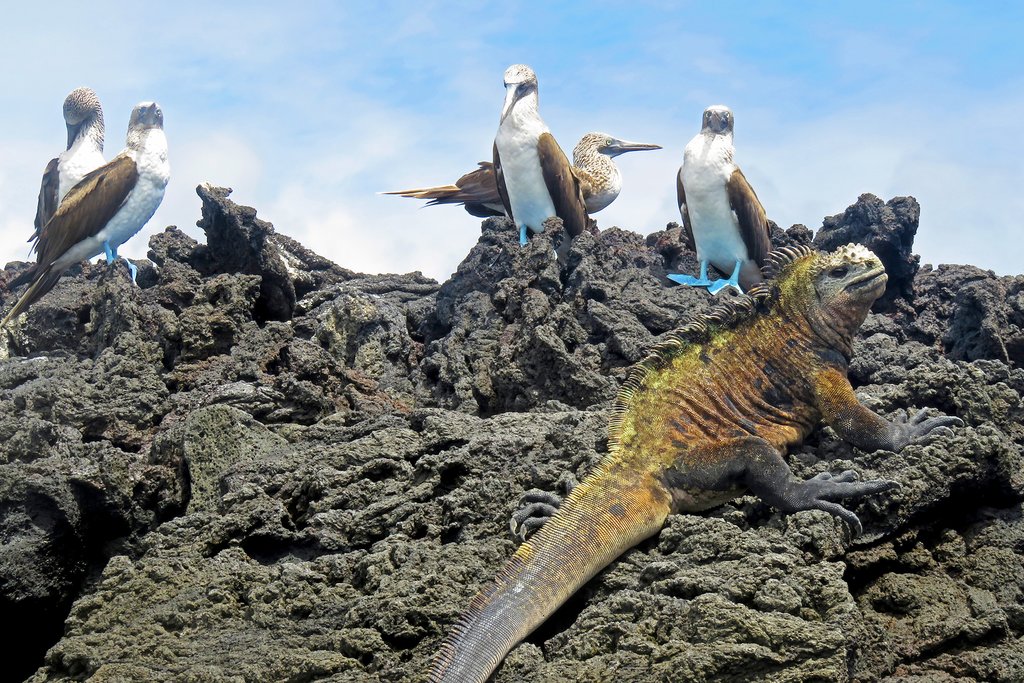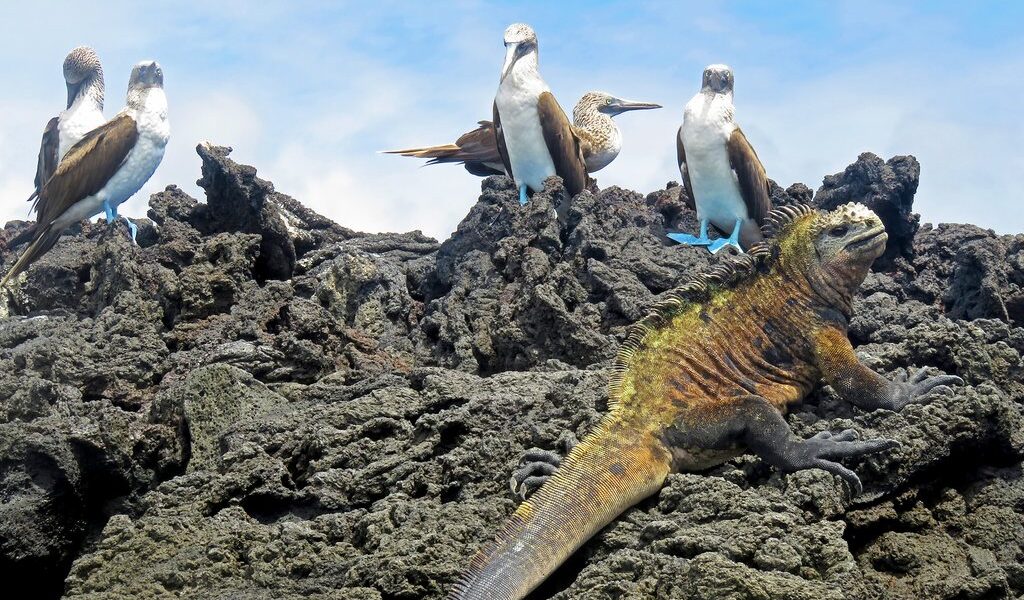
January is one of the best times to visit the Galápagos Islands, thanks to the pleasant temperatures and birdwatching opportunities. It is also a great month to experience hiking and underwater adventures, such as snorkeling and diving. Many of the marine species are active during this time, which means you will get to see endemic birds, iguanas, and sea turtles as they make their way upon the land to nest and lay their eggs. Read on to learn why January is an excellent month to visit the Galápagos.
## Weather in the Galápagos Islands in January
For those dreaming of a tropical escape where the sun warms both the land and the sea, January presents an unparalleled opportunity to visit the breathtaking Galápagos Islands. As Ecuador welcomes its summer season, the islands transform into an idyllic paradise, making January arguably one of the most desirable months for exploration and adventure.
During this time, the islands bask in delightful warmth. Expect daytime temperatures to consistently hover around a comfortable 85 °F, creating perfect conditions for outdoor pursuits. The surrounding ocean mirrors this warmth, with inviting sea temperatures averaging around 76 °F, beckoning visitors to immerse themselves in the clear waters. While sunshine dominates, it’s worth noting that afternoon showers are a relatively common occurrence in January. The islands typically experience about 2.5 inches of rainfall throughout the month. However, these brief showers rarely disrupt the overall experience, and they often contribute to the lush, vibrant landscape. The predominantly warm and inviting weather ensures ample opportunities for exploration, whether it’s discovering hidden coves or observing the unique wildlife that calls these islands home.
## Considerations for Crowds and Costs
It’s important to be aware that January falls within the peak tourist season in the Galápagos Islands. Consequently, you can anticipate higher prices for accommodations and flights compared to other times of the year. The increased demand naturally drives up costs, so it’s wise to plan accordingly. However, savvy travelers can employ strategies to mitigate these expenses. Booking your trip well in advance is a tried-and-true method for securing better deals on both flights and hotels. Conversely, if you’re feeling adventurous and flexible, you could consider taking a chance on last-minute deals, which can sometimes offer substantial savings, particularly on hotel bookings.
The popularity of January means that the islands will be bustling with fellow tourists eager to witness the Galápagos’ natural wonders. While some travelers might find this off-putting, many consider the experience well worth the presence of larger crowds, primarily due to the extraordinary animal activities that occur during this period. The unique breeding and nesting behaviors of various species make January a truly remarkable time to observe the islands’ diverse wildlife.
## Prime Locations to Visit
January unveils a captivating wildlife spectacle on the Galápagos Islands, marking the beginning of the nesting season for numerous species that tend to remain elusive during other parts of the year. Española Island becomes a haven for green sea turtles as they emerge from the ocean to lay their precious eggs along the sandy shores. Meanwhile, on Pinzon Island and Santa Cruz, the iconic Galápagos giant tortoises initiate their nesting rituals.
The Galápagos giant tortoise, a remarkable species endemic to this archipelago, boasts an ancient lineage, having arrived on the islands approximately three million years ago. Tragically, these gentle giants have faced significant population declines over time. However, recent conservation efforts have brought renewed hope, with baby tortoises hatching on the islands for the first time in a century.
Returning to Española Island, visitors will also be treated to close-up encounters with female marine iguanas. These unique creatures are the only lizard species known to swim in the ocean, and during January, the males undergo a striking transformation, displaying vibrant colors to attract mates. For those interested in observing land iguanas as they begin their reproductive cycle and bask in the sun on the volcanic rocks, a trip to nearby Isabela Island is highly recommended.
## Activities and Experiences
The return of numerous bird species to the islands for the summer months makes January an exceptional time for birdwatching. Prepare to be amazed by the sight of rare seabirds, including the distinctive red-footed, blue-footed, and masked boobies, the enormous frigatebirds, and the flightless cormorants. Greater flamingoes, Galápagos doves, and Nazca boobies also commence their nesting season, and the majestic waved albatrosses begin to arrive.
The confluence of wildlife migrations creates an unparalleled opportunity for snorkeling and birdwatching. Beyond these aquatic and avian pursuits, visitors can also indulge in kayaking, surfing, and a variety of land-based tours, such as hiking and mountain biking. The turquoise waters of the Galápagos are arguably at their most inviting in January, offering exceptional clarity and calm conditions that provide incredible visibility for scuba diving and swimming.
Pristine white sand beaches await discovery throughout the Galápagos Islands in January, providing idyllic settings for relaxation and wildlife encounters. Share these shores with playful sea lions, and keep an eye out for other fascinating species such as sea turtles, penguins, iguanas, and even dolphins.
## Special Events
**Epiphany (Three Kings) Holiday (January 6):** This vibrant festival is celebrated throughout Ecuador, marked by traditional music, lively parades featuring folk dancers, and the participation of civic groups adorned in local costumes. It offers a glimpse into the rich cultural heritage of the region.
B-895

